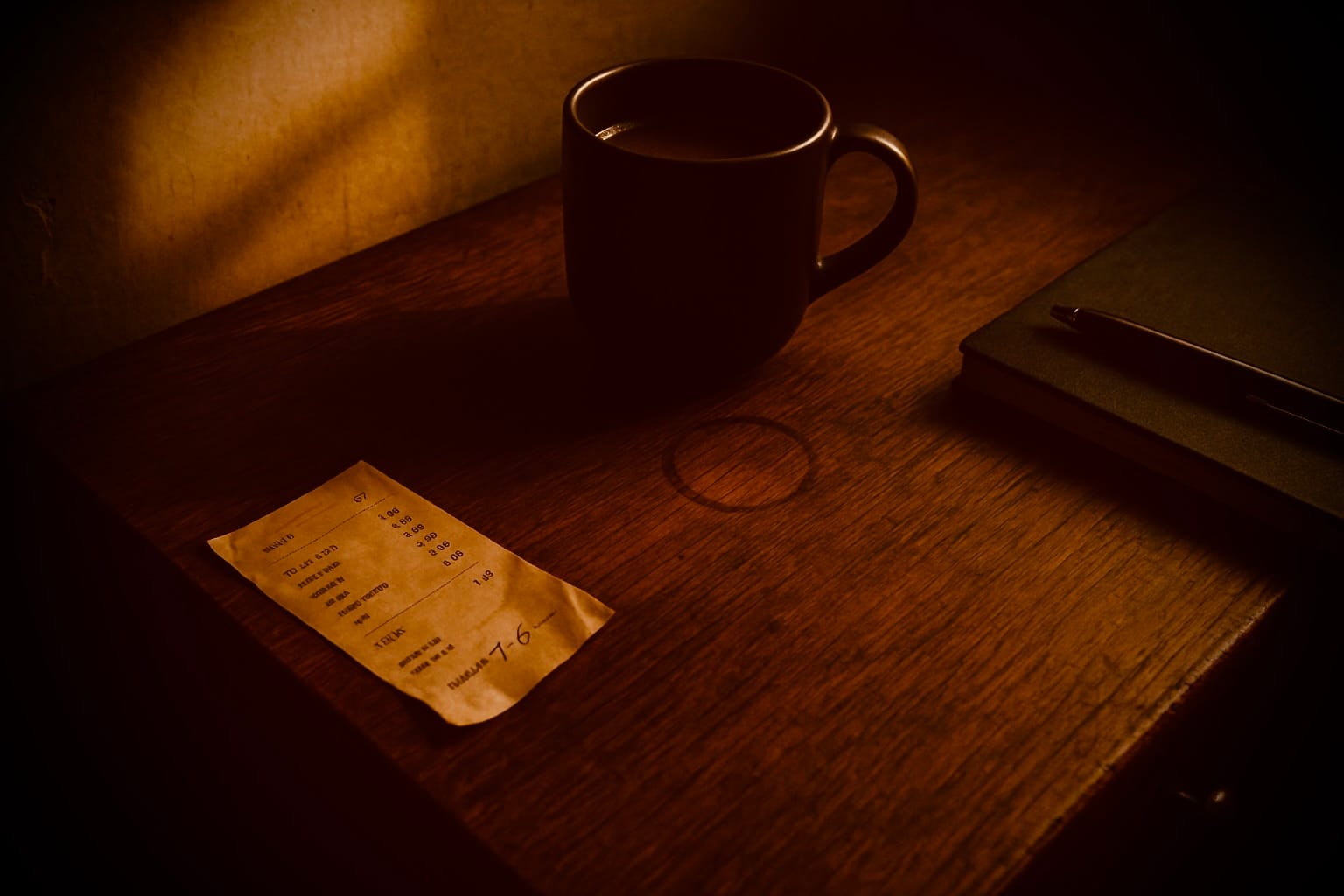On the Fading of Small Traces
The ring is faint now—a soft, imperfect circle where porcelain met wood. Days ago, it was darker, sharp-edged, insistent. Now it's thinned to almost nothing. Only visible when the light catches it sideways.
I haven't wiped it away. Not from sentiment. More from curiosity about how long a thing lasts when nobody touches it.
The ring is what's left of a morning I don't remember, a conversation that went nowhere, a meeting that produced nothing. Each day, the mark gets weaker. I imagine Montaigne's ghost, centuries later, still watching the Latin inscriptions on his beams fade year by year. He understood that we mark things around us not because they'll last, but because the act of marking itself feels necessary. Maybe he knew our traces are like that too—both ordinary and strange, already fading as we make them.
Later, hunting for a pen that worked, I found an old receipt in the desk drawer. Some café I don't know. The ink had gone brown. Three years old, nearly to the day. Someone had scrawled a phone number down the side, the last two digits smudged to nothing. I sat there holding this piece of someone else's afternoon. How did it end up here? Did they ever call? Did it matter? Or was it just another half-formed plan that never happened?


